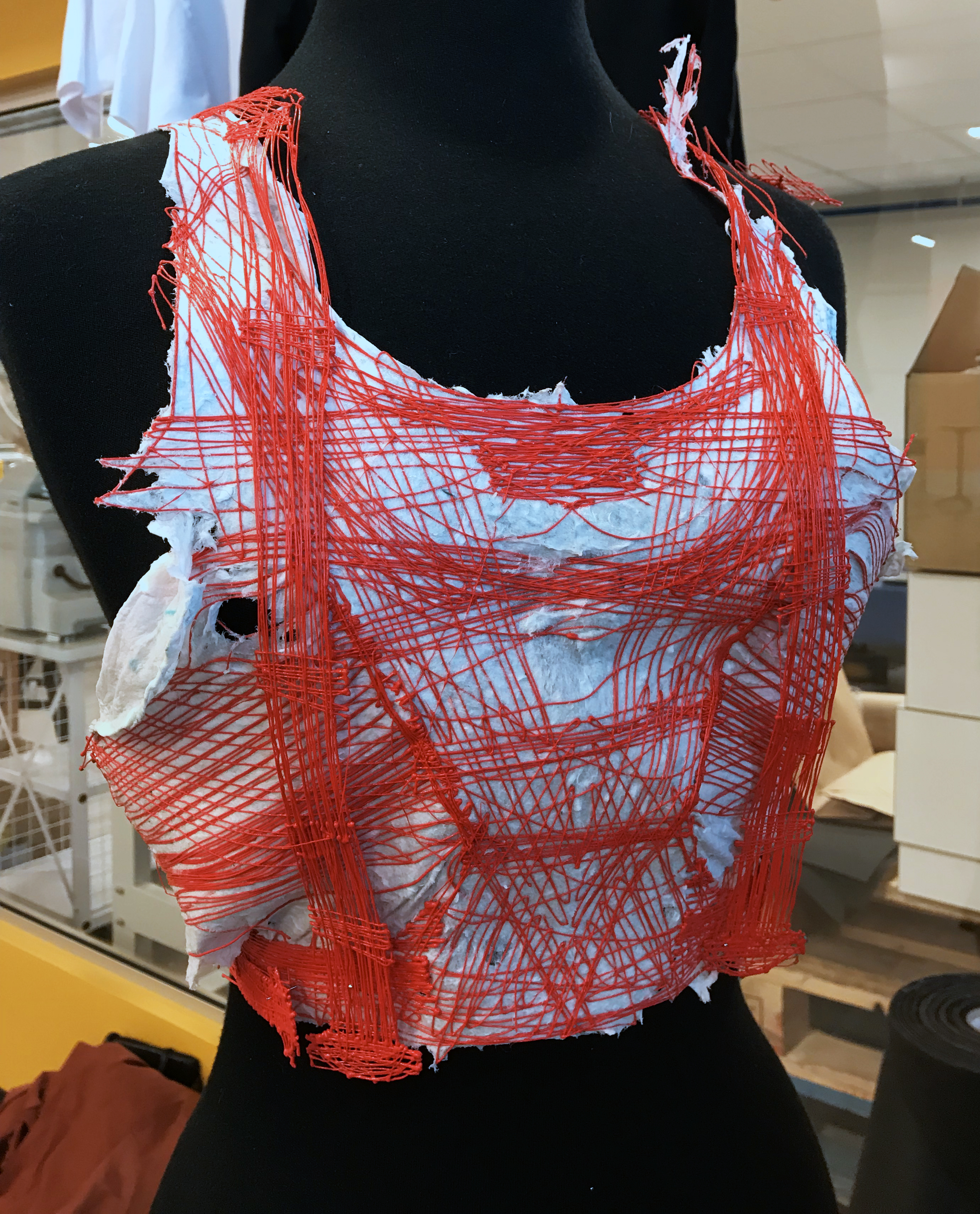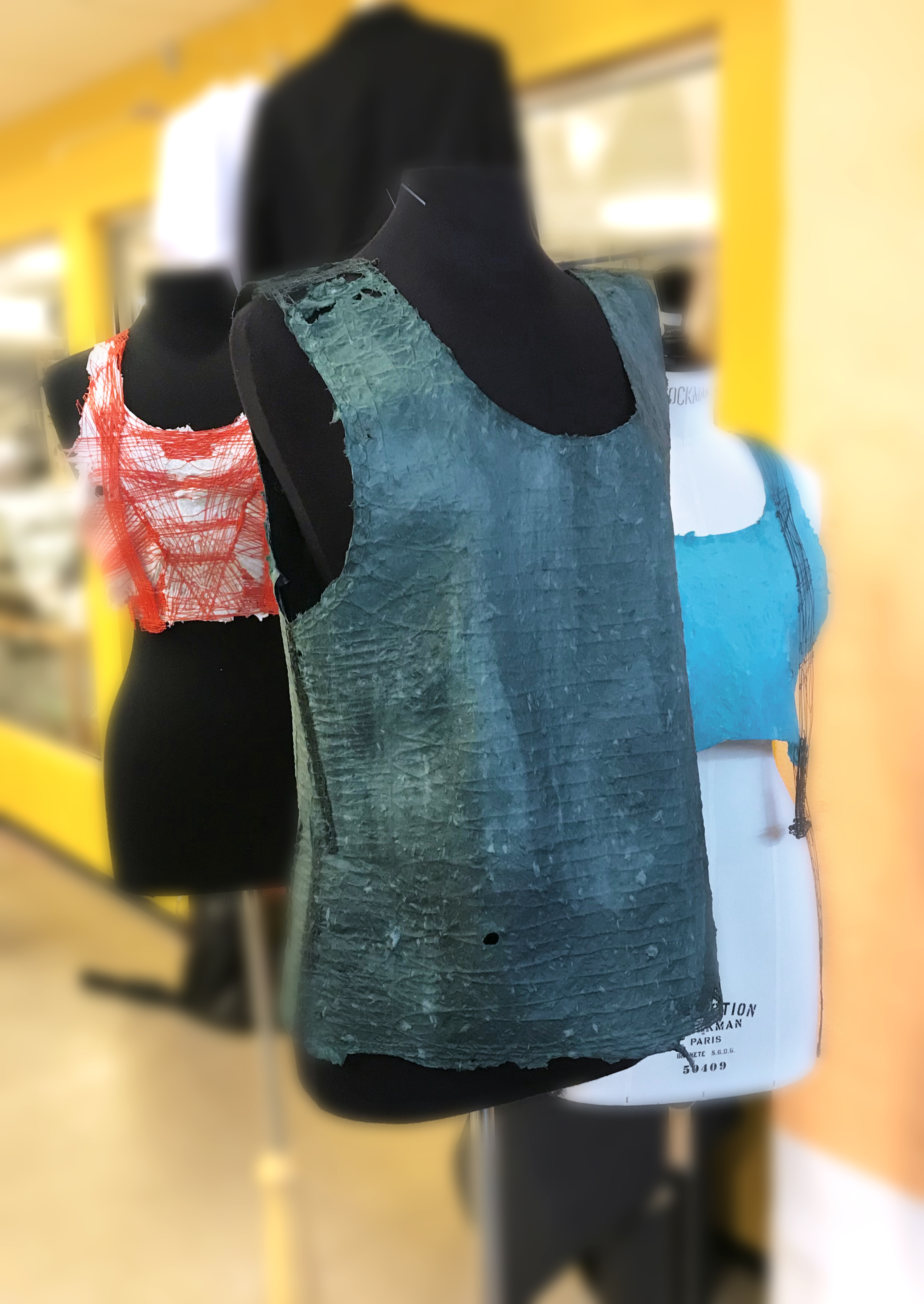
- Streamateria Running Top
- No Waste

Running top made from 3D-printed flexible PLA mesh. The top is made from a front and a back piece.
PLA (Polylactic acid) is a bioplastic made out of corn. The mesh structure can be compared to the capillary system of a leaf, which is the skeleton of the garment. The mesh is coated with a foam of cellulose, mixed with a bioplastic.
Guringo Design Studio
Puma (white running top)
We used to own products like games, music and films – but now we stream them instead. Could this be the case with clothes, as well? Design that can be streamed and temporarily formed into physical products. The garments are made from biodegradable material; once they have been used for a limited period of time, they can be returned to the ecological system, as biogas for example. The project was initiated at the DO-tank Center where an adapted 3D-printer was used to print the mesh structure.







Bio-based materials and 3D-printed clothes that do not last very long. Could this be the answer to guilt-free consumption?
Maybe we can remove the ownership of garments and rather see the garments as a temporary service, like the shift from buying CDs to streaming music. In this way, the garments can be manufactured when the customer needs it, and be disposed of in household waste bins and become energy, not waste.
The material developed by Guringo Design Studio is called Streamateria and is made much like how a leaf is created – with its vein-like structure deciding the shape and a membrane tissue to complete it. The material is designed to die from the beginning, a perspective inspired by the ecosystem in the forest where there are no waste, only raw material for new resources.
All group objects:
The origin and production of the materials that make up a product as well as the chemicals used to give the product its characteristics will greatly affect its environmental performance. Among the most important challenges are the substitution of fossil or other resource inefficient raw materials, phasing out harmful chemicals and implementing more efficient reuse/recycling methods at end-of-life.
In this knowledge area, research and development regarding the choice of materials, material combinations, and chemical substances in textile goods are dealt with, as well as possibilities for improved collection, sorting and material recycling.
The textile industry and the research community are well aware and very active when it comes to innovations in these fields. This holds promise for future possibilities of large scale implementation of renewable or recycled materials, as well as alternative, environmentally benign chemicals.
Each decision during product development affects sustainability and circularity. To develop products with lower environmental impact, the design team needs to be well aware of each component and process, and their individual and combined effect on the final product and its longevity.
One challenge is having comprehensive knowledge regarding sutainability when it comes to all of the components and processes that are a part of the production and lifetime of the garment. An additional challenge is implementing alternative design methods that do not require virgin components. Ongoing research inspires and shows methods to re-make existing products to have new functionalities and designs with an upgraded look.
With higher traceability when it comes to materials, components, and processes, there are increased possibilities for more conscious decisions. If communicated well, this gives the consumer a better basis for decisions.
The current use of textile products is very unsustainable. We tend to buy many more products than we need and we throw away most of our textiles with the household waste, long before they are worn out.
The main challenges regarding resource efficient waste management includes improving collection rates, automated and material specific sorting technologies, and the scaling up of recycling technologies.
Intense research and industry innovation is focusing on the technology development needed, while policy and other financial instruments are developed at the national and EU levels. The need of the industry to secure recycled feedstock, in combination with upcoming EPR (Extended
Producer Responsibility) policies, will lead to new possibilities for the improved recycling of textiles.